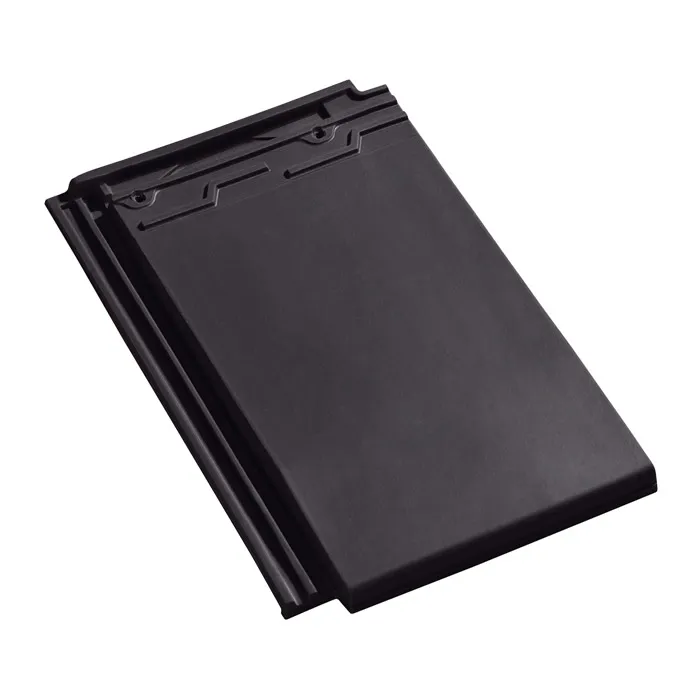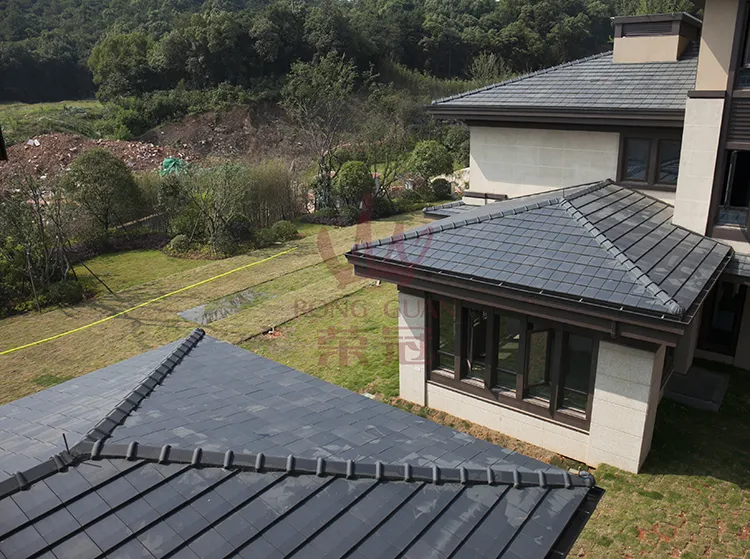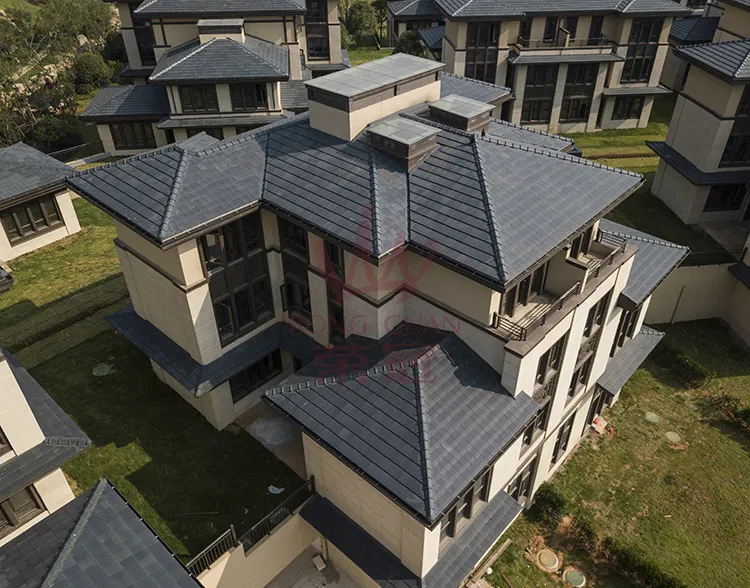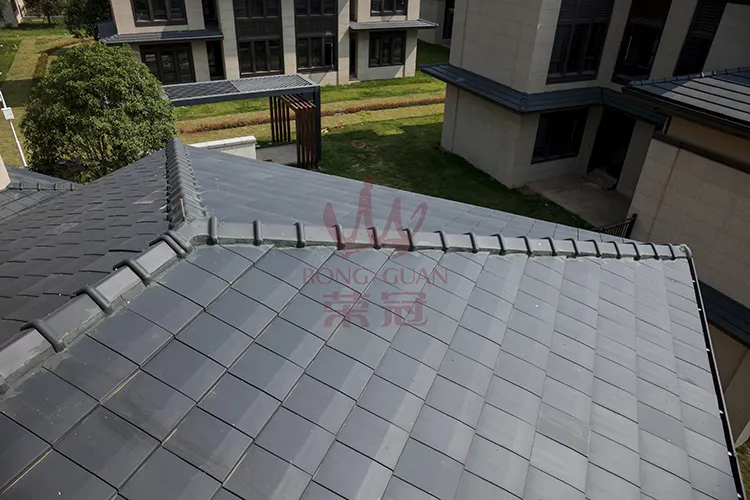Flat roofs often face the problem of rainwater accumulation due to their structural design. Especially in rainy seasons or in harsh climates, if the roof is not drained well, the water accumulation will not only affect the beauty of the roof, but may also cause serious damage to the structure of the building. Among the many building roof materials, flat clay tile, as a traditional and classic material, occupies an important position in roof design. However, flat clay tile roofs, especially flat clay tile roofs, are easy to accumulate water due to their relatively flat surface, making effective drainage and waterproofing measures particularly important.
This article will explore in depth how to prevent water accumulation on flat clay tile roofs, and provide you with detailed guidance from the characteristics of flat clay tiles, drainage design, common problems and solutions to ensure the long-term service life of the roof and the safety of the building.

Structural characteristics of flat clay tile roof
1. Definition and characteristics of flat roofs
Flat roofs refer to roofs with a small surface inclination angle and are almost horizontal. Compared with traditional pitched roofs, flat roofs have the advantages of being modern, simple and space-saving, and are especially suitable for urban buildings and modern residences. However, flat roofs also have a significant disadvantage, that is, rainwater easily accumulates. Especially for roofs using flat clay tiles, although flat clay tiles themselves have certain waterproof properties, their flat design often makes it difficult to effectively guide rainwater out.
2. Characteristics of flat clay tiles
Flat clay tiles are made of clay fired at high temperatures and have excellent durability, fire resistance and aesthetics. It is usually used for traditional pitched roofs, but has gradually gained certain applications in flat roof designs. However, the drainage of flat clay tiles is not as efficient as metal roofs or modern roofing materials, so when used on flat roofs, the design of the drainage system must be considered to prevent water accumulation.

What is the impact of water accumulation on flat clay tile roofs?
The impact of water accumulation on flat clay tile roofs is mainly reflected in the following aspects:
1. Water penetration and roof damage
Although flat clay tiles themselves have certain waterproof properties, on flat roofs, water accumulation can easily penetrate into the roof structure, causing water penetration problems on the walls inside and outside the roof. This may cause problems such as dampness, mildew, and paint peeling on the walls inside the house, and even lead to more serious structural damage.
2. Tile damage and shedding
Long-term water accumulation will have a negative impact on flat clay tiles, especially in cold areas, where water accumulation may cause tiles to expand or crack after freezing. The brittleness of flat clay tile materials makes it easy to break or fall off when exposed to extreme weather and temperature changes, thus affecting the sealing and aesthetics of the roof.
3. Increased roof load-bearing pressure
Water accumulation will not only increase the weight of the roof, but also put additional pressure on the roof structure. For roofs with poor load-bearing capacity, water accumulation may cause structural deformation and even cause the risk of roof collapse.
4. Accelerated aging and corrosion
Water accumulation on the roof will accelerate the aging of flat clay tiles. Long-term exposure to moisture will cause the surface coating and waterproof layer of flat clay tiles to fall off, thereby shortening the service life of the roof material. In addition, water accumulation may also cause corrosion to the metal brackets or other additional structures of the roof, affecting the safety of the overall building.

How to prevent water accumulation on flat clay tile roof?
1. Optimize roof design and increase slope
In order to prevent water accumulation problems, we must first start with the design of the roof. Although a flat roof may seem simple, in order to ensure a smooth drainage system, the design of the roof should avoid being completely flat. Even for a roof with flat clay tiles, a certain slope should be designed on the roof surface according to design requirements, and the slope should be at least 1 to 2 degrees. This will help rainwater flow along the slope and reduce the risk of water accumulation.
2. Reasonable layout of the drainage system
An efficient drainage system is the key to preventing water accumulation. The drainage system of a flat roof should include multiple drainage points to ensure that rainwater can flow out quickly. Here are some design considerations for the drainage system:
● Drainage outlet location: The drain outlet should be set at the lowest point of the roof, and try to avoid setting the drain outlet in the middle or edge of the roof. Through reasonable design, ensure that the water flow can flow smoothly to the drain outlet through the slope of the roof.
● Drainage pipe layout: The drainage pipe should avoid bending and blockage to ensure that the water flow is unobstructed. Especially for roofs using flat clay tiles, the design of the drainage pipe should be more scientific to ensure that every drop of water can be discharged smoothly.
● Use of rain gutters: On flat roofs, the installation of rain gutters can effectively guide water flow and reduce the risk of water accumulation. Rain gutters should be cleaned regularly to avoid clogging by debris.
3. Use high-quality waterproof materials
The waterproofness of flat clay tile roofs depends to a certain extent on the quality of roof waterproof materials. Therefore, it is crucial to choose high-quality waterproof materials during roof construction. High-quality waterproof membranes or waterproof coatings can provide an additional layer of protection for flat clay tiles and reduce the possibility of water penetration. Especially at joints and interfaces, special sealants should be used to ensure that no moisture penetrates.

4. Regular maintenance and inspection
In order to ensure the normal operation of the drainage system of flat clay tile roof, regular maintenance and inspection are essential. The key points of the inspection should include:
● Cleaning drains and pipes: Drains and pipes are key parts for rainwater outflow and should be cleaned regularly to prevent fallen leaves, debris, etc. from clogging the drainage system.
● Check the tile status: Regularly check the integrity of flat clay tiles and replace damaged or loose clay tiles in time to avoid leakage problems.
● Check the waterproof layer: Check whether the waterproof layer is intact, damaged or aged, and ensure that the roof has good waterproof ability.
5. Install a breathable layer
Installing a breathable layer on the flat clay tile roof can effectively help the discharge of water vapor and reduce moisture accumulation. Especially in rainy or humid areas, the breathable layer can improve the ventilation of the roof and reduce the erosion of water and moisture on the roof material.
6. Choose the right flat clay tile
Flat clay tiles of different brands and qualities differ in waterproofness and durability. Choosing high-quality flat clay tiles can effectively avoid water accumulation caused by clay tile damage. Especially when using flat roofs, it is more important to choose flat clay tiles with flat surfaces and strong sealing.
Foshan Rongguan Glass Material for Building Co., Ltd. is your ultimate destination for premium building materials. From quartz stone to terrazzo flooring and flat clay tiles, our products are designed to meet diverse construction requirements. As a leading manufacturer, our commitment to quality is backed by ISO9001:2015 certification and advanced production facilities. Contact Rongguan today to discuss your needs and take advantage of our promotional offers.

